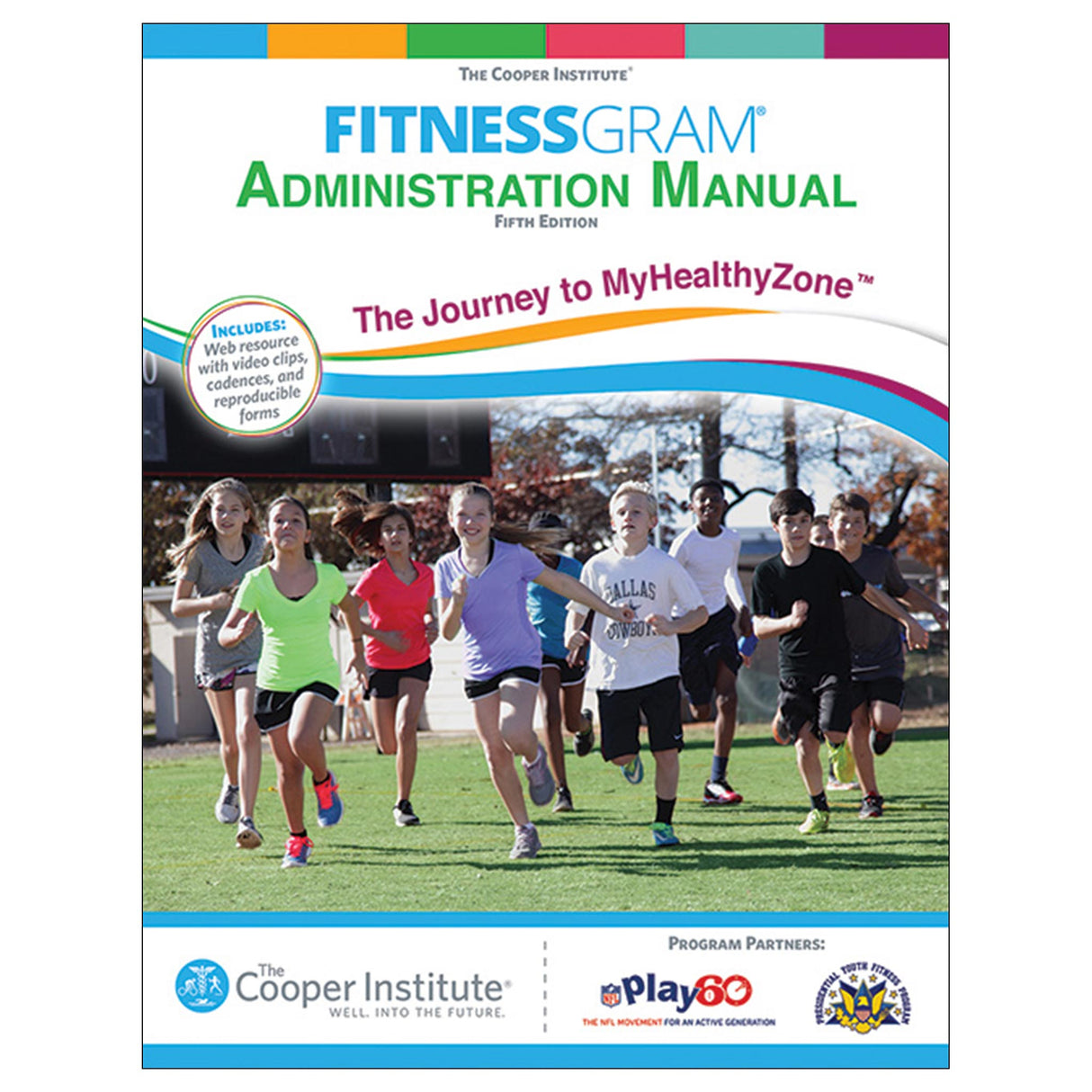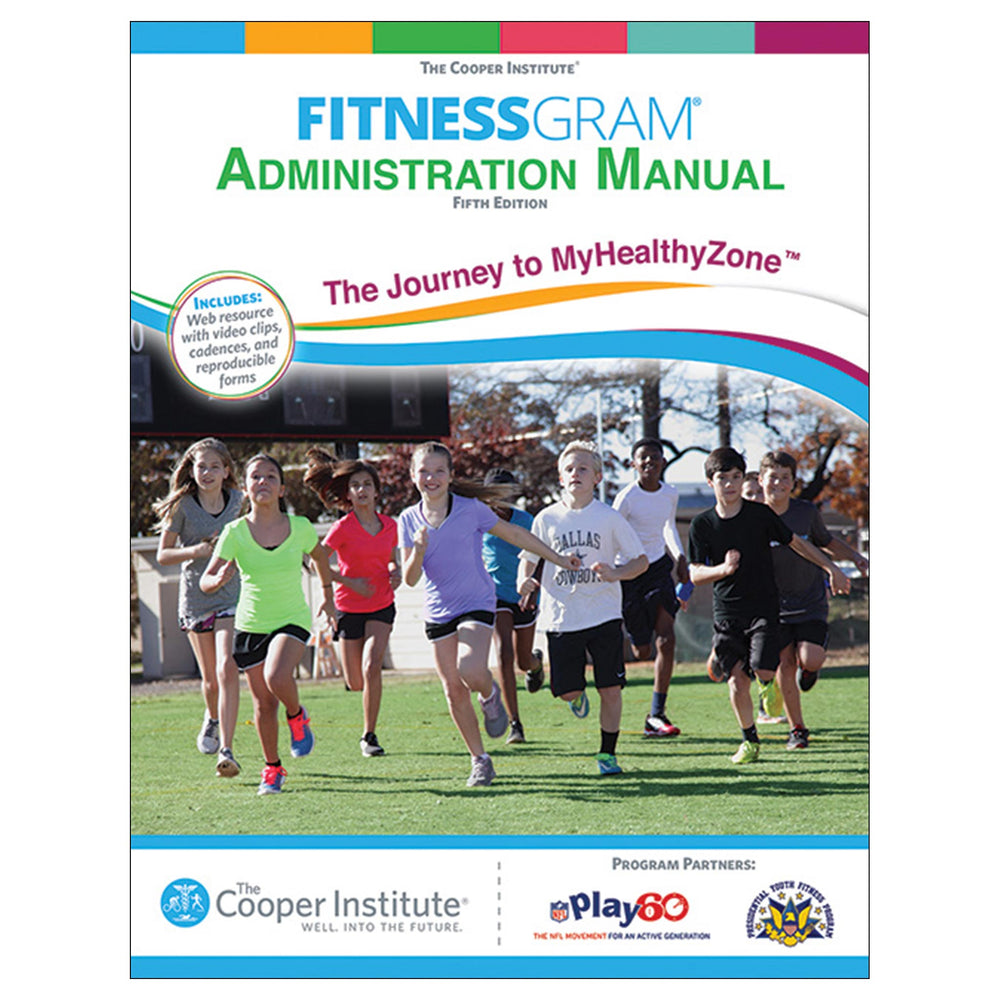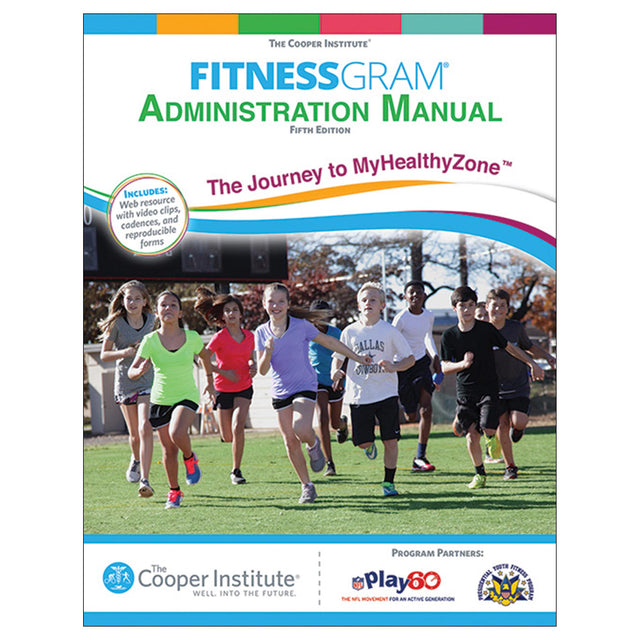FitnessGram Administration Manual 5th Edition PDF
The Journey to MyHealthyZone
Author: The Cooper Institute
$35.00 USD
Access Duration: 10 Years
The best just got better.
FitnessGramis the gold standard for assessing the health-related fitness and activity levels of youths. The Cooper Institute has updated the FitnessGram Administration Manual with new material to ensure that FitnessGram is the most comprehensive and informative program that can drive meaningful behavior change and set up children for a healthy future.
The fifth edition of FitnessGram Administration Manual: The Journey to MyHealthyZone offers K-12 teachers two primary assessment resources that allow them to produce individualized reports for each student in their class. FitnessGram provides a complete battery of health-related fitness assessments that are scored using criterion-referenced Healthy Fitness Zone® standards. The standards are age and sex specific and are based on how fit children need to be for health.
New to this fifth edition:
• Audio of cadences and videos and photos for test protocols, making it easier for you to administer tests
• A chapter on communicating with stakeholders (students, parents, faculty and staff, administrators, and the community)
• A chapter on data mining and using data to inform your instruction and help you make sound curricular decisions
• A design that enhances your ease in using the material and administering the tests
You will learn how to administer the tests, interpret the results, and provide feedback to your students on their results. FitnessGram Administration Manual also offers a web resource that includes video clips that demonstrate the assessments; audio for the PACER, curl-up, and push-up tests; and reproducible forms.
Through FitnessGram, you can assess children’s fitness in these areas:
• Aerobic capacity
• Muscle strength
• Muscular endurance
• Flexibility
• Body composition
Several test options are provided for most of those areas; one test item is recommended.
As a FitnessGram user you also have access to everything the Presidential Youth Fitness Program has to offer. The Presidential Youth Fitness Program helps physical educators assess, track, and recognize youth fitness and physical activity. Through this program you are also provided with the following:
• Instructional strategies for promoting student physical activity and fitness
• Communication tools to help physical educators increase awareness about their work in the classroom
• Options for recognizing fitness and physical activity achievements
This latest version of the FitnessGram Administration Manual: The Journey to MyHealthyZone is your guide to conducting the test protocols, recording the data, interpreting the results, and sharing those results in ways that will encourage students to be physically active and adopt healthy behaviors throughout their lives.
Part I Introduction to FitnessGram and ActivityGram
Chapter 1. Mission, Goals, and Philosophy of the FitnessGram Program
FitnessGram
Chapter 2. Fitness Education and Assessment Guidelines
Assessment Options for Fitness Education
Effective and Appropriate Use of FitnessGram and ActivityGram Assessments in Physical Education
Recommended Approaches for Program Evaluation
The Fitness Education Process Step by Step
Physical Education Resources to Support Use of FitnessGram
Chapter 3. Promoting Physical Activity
Importance of Promoting Physical Activity in Physical Education
Physical Activity Guidelines
Concepts for School Physical Activity Promotion
The Youth Physical Activity Promotion Model
Applying the Youth Physical Activity Promotion Model
Reinforcement (Recognition and Motivation)
Part II FitnessGram Assessment Model
Chapter 4. Communicating With Stakeholders
Strategies for Communicating the Fitness Education Process
Communicating With Students
Communicating With Parents
Communicating With Faculty and Staff
Communicating With Administrators
Communicating With the Community
Chapter 5. FitnessGram Test Administration
Importance of Reliable Scores
Considerations for Testing Primary Grades
Considerations for Testing Secondary Students
Considerations for Safety
Testing of Large Groups or Classes
Test Items
Considerations for Testing Student With Disabilities
Software Exemptions for Students
Chapter 6. Aerobic Capacity
Overview of the FitnessGram Aerobic Capacity Standards
Progressive Aerobic Cardiovascular Endurance Run, PACER
One-Mile Run
Walk Test
Chapter 7. Body Composition
Overview of the FitnessGram Body Composition Standards
<cona2>Body Mass Index
Portable Bioelectric Impedance Analyzers
Skinfold Measurements
Chapter 8. Muscular Strength, Endurance, and Flexibility
Abdominal Strength and Endurance
Curl-Up
Trunk Extensor Strength and Flexibility
Trunk Lift
Upper-Body Strength and Endurance
90° Push-Up
Modified Pull-Up
Flexed Arm Hang
Flexibility
Back-Saver Sit-and-Reach
Shoulder Stretch
Chapter 9. FitnessGram Physical Activity Questions
Description of Activity Assessment
Administration
Chapter 10. Interpreting FitnessGram Results
Derivation of Criterion-Referenced Standards
Influence of Body Size and Maturity on Fitness
Interpreting Performance on Physical Fitness Assessments
Chapter 11. Understanding and Using FitnessGram Data
Using Formative and Summative Assessments with FitnessGram
Use of FitnessGram Data with Students
Use of FitnessGram Data with Teachers
Use of FitnessGram Data with Parents
Use of FitnessGram Data with Administration
Part III ActivityGram Assessment Module
Chapter 12. ActivityGram Administration
Description of ActivityGram
ActivityGram Administration
ActivityGram Lite (Youth Activity Profile)
Chapter 13. Interpreting and Using ActivityGram Results
Providing Feedback to Children on ActivityGram
Limitations of the ActivityGram Assessment
Interpreting ActivityGram Lite (Youth Activity Profile) Results
Using Data from Physical Activity Assessments
The book includes a web resource with video clips; audio for cadences in PACER, curl-up, and push-up tests; and reproducible forms.
All ancillary materials for this text are free to course adopters and available online at www.HumanKinetics.com/FitnessGramAdministrationManual5E.





